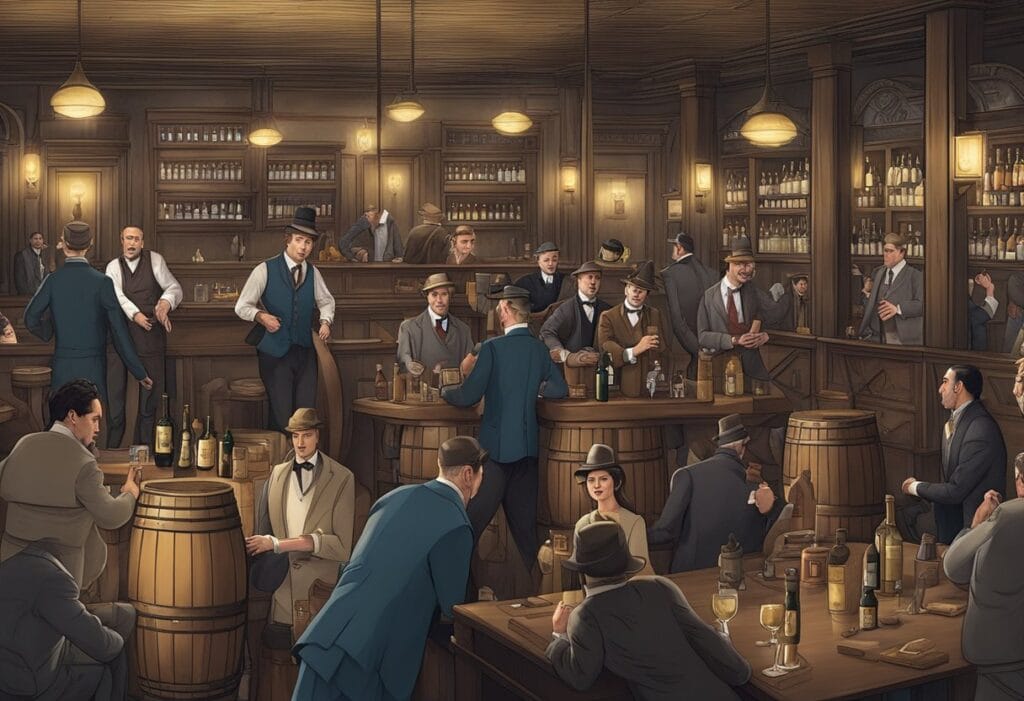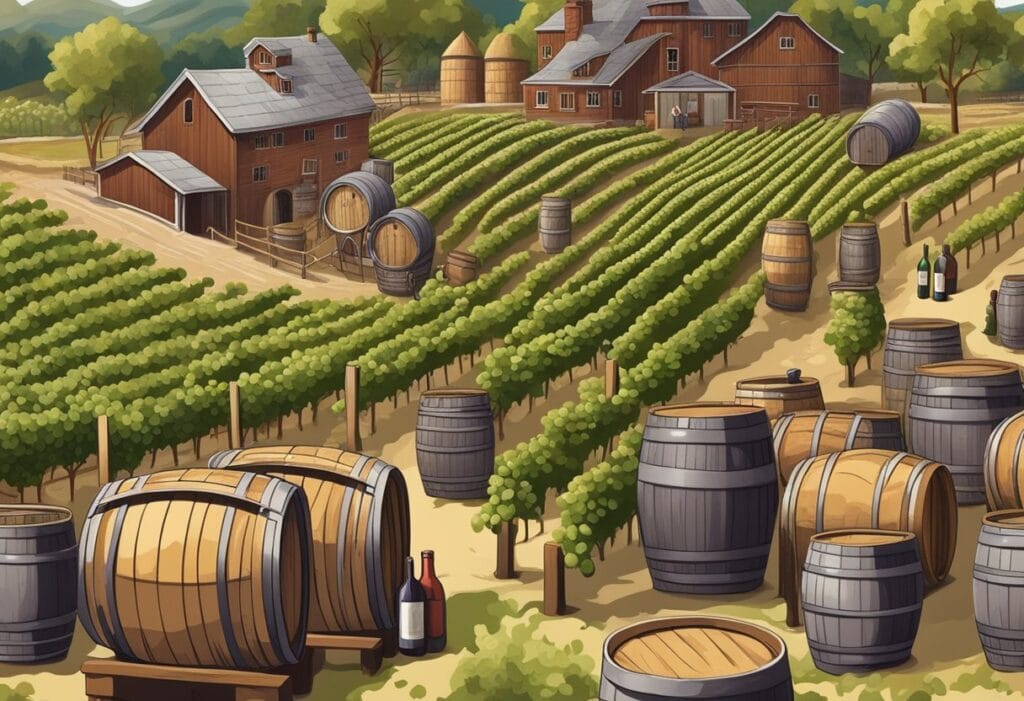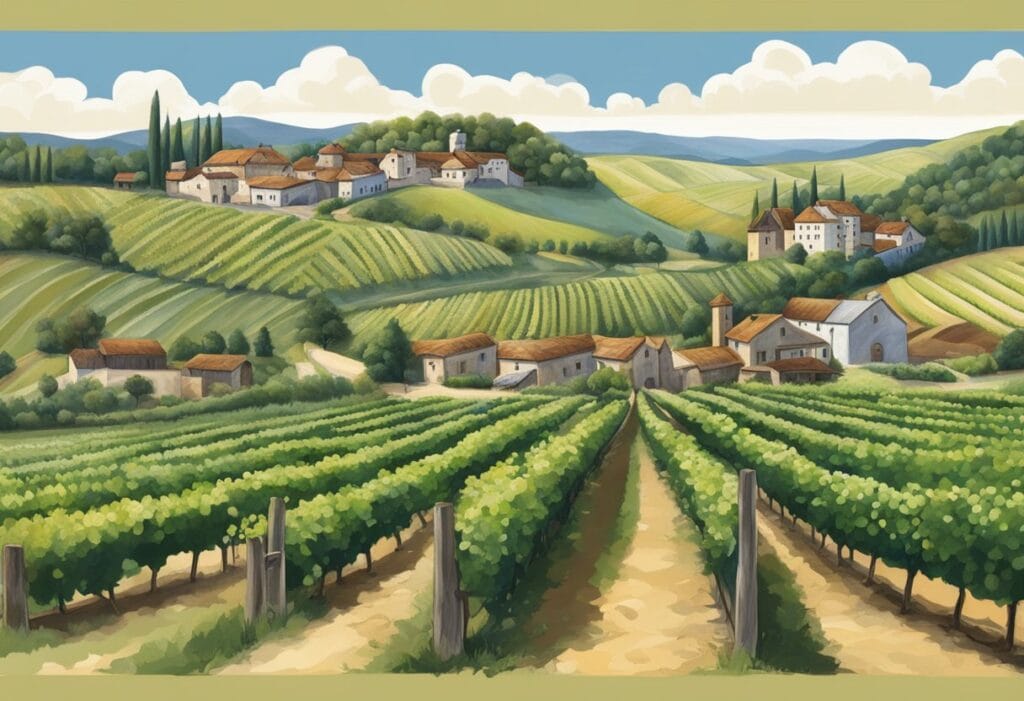The period known as Prohibition fundamentally altered the trajectory of the American wine industry. When the 18th Amendment went into effect in 1920, producing, transporting, and selling intoxicating liquors became illegal.
This period reshaped the economy and culture, affecting industries across the nation. Winemakers faced a critical challenge: adapt to survive or go out of business. The creativity and resilience of winemakers during these trying times are a testament to the industry’s enduring spirit.

While many industries suffered, the wine industry discovered novel ways to persevere, such as utilizing loopholes that allowed the production of sacramental wine or selling concentrated grape juice with instructions that, if followed incorrectly, would cause fermentation, leading to the creation of wine.
These methods allowed vintners to maintain vineyards and winemaking knowledge. After the 21st Amendment repealed Prohibition in 1933, the American wine industry emerged from the shadow of Prohibition, driving innovation and growth that would ripple through the ensuing decades.
Key Takeaways
- Prohibition reshaped the American wine industry, necessitating significant adaptations.
- Innovative strategies enabled winemaking to continue covertly during Prohibition.
- The repeal of Prohibition allowed the wine industry to recover and innovate.
Historical Context of Prohibition

Before diving into the intricate era of Prohibition in the United States, it’s imperative for you to understand the rigorous legal and social developments that set the stage for this transformative period. Your grasp of the Prohibition’s framework, embedded within the U.S. Constitution, and the legal intricacies of the National Prohibition Act and the Volstead Act, is crucial.
Lead-Up to National Prohibition Act
The movement towards national Prohibition began with concerns over excessive drinking and its supposed impact on American society. By the early 20th century, a coalition of temperance activists, religious groups, and politicians galvanized support, asserting that a ban on alcohol could address social issues, improve health, and reduce crime. Your appreciation of this backdrop is key to understanding the eventual passage of Prohibition legislation.
The 18th Amendment and Volstead Act
When the 18th Amendment was ratified on January 16, 1919, it created the constitutional foundation for Prohibition. This amendment made the manufacture, sale, and transportation of intoxicating liquors illegal, though it did not outlaw possession or consumption.
Subsequently, the Volstead Act served as the legal vehicle for enforcing the 18th Amendment. You should note that the act defined intoxicating liquor and laid out the framework for prohibition enforcement.
Enforcement and Legal Challenges
Enforcement of Prohibition posed significant legal challenges. The federal government had to balance enforcement with growing opposition and legal loopholes that allowed for medicinal and religious uses of alcohol.
Additionally, organized crime saw a rise due to the smuggling and illegal sale of alcohol, often exposing the law’s limitations. It’s important for you to recognize these challenges as they were instrumental in shaping the public opinion that eventually led to Prohibition’s repeal.
Prohibition’s Impact on the Wine Industry
Prohibition changed the course of the American wine industry, prompting innovation among vineyards and wineries, giving rise to bootleggers and speakeasies, exploiting loopholes and legal exemptions, and leaving significant economic and social ramifications.
Adaptation of Vineyards and Wineries
During Prohibition, wineries had to pivot swiftly to stay afloat. Some vineyards started producing grape juice, which could legally be turned into wine at home. Vineyards like those in California wine country began selling grape juice with warnings that fermenting it would create alcohol, subtly guiding the public on illegal wine production.
Rise of the Bootleggers and Speakeasies
You might find it intriguing that Prohibition did not entirely dry out American social life. Bootleggers thrived, distributing wine and other spirits through a network of secret bars called speakeasies. These venues became hubs for Americans to enjoy the forbidden fruit, often coordinating with organized crime.
Loopholes and Legal Exemptions
Resourceful individuals and businesses utilized loopholes, one of which allowed the production of sacramental wine for religious practices. Moreover, personal use exemption permitted households to make limited quantities of wine, which fostered a culture of home wine making as detailed in the ramifications on the wine industry.
Economic and Social Ramifications
Economically, Prohibition suffocated an industry that pre-prohibition was flourishing. Socially, it affected the American drinking culture, as individuals sought other avenues like speakeasies to consume alcohol. The legislation inadvertently stimulated a counterculture revolving around the allure of speakeasies and clandestine enjoyment of wine and spirits.
The Wine Industry During Prohibition
During Prohibition, the American wine industry faced significant challenges, yet it demonstrated resilience through adaptation and innovation. You’ll discover how production continued, the creative strategies winemakers employed, and the pivotal roles California and New York played in sustaining the industry.
Production and Distribution Under Prohibition
Prohibition severely restricted the production and distribution of alcoholic beverages, but wineries could legally produce sacramental wine for religious purposes. Some winemakers obtained permits, positioning their business as providers of wine for religious congregations.
Distribution channels, highly regulated and frequently scrutinized, often led to an underground market where wines were illicitly traded and consumed. In this climate, vineyard acreage in California surged as demand for grapes by home winemakers rose, which indirectly supported the wine industry’s sustenance.
Innovations by Winemakers
Resourceful winemakers introduced wine bricks, a concentrated grape product that you could legally buy and then rehydrate at home, with a warning label that detailed how to avoid accidentally fermenting the brick into wine.
This innovation offered a loophole to consumers and provided a lifeline for the industry. The enterprising spirit in the wine industry also saw a shift in the types of wines produced, with a focus on portability and ease of fermentation in the home environment.
The Role of California and New York
California and New York emerged as key players in the American wine industry during Prohibition. California’s vast vineyards provided the necessary grapes for legal sacramental wines and grape products like wine bricks, while New York’s wineries capitalized on the demand for sacramental wine from the large urban populations and religious institutions.
Both states contributed to a dual economic boost – the sale of raw materials to home winemakers and the legally sanctioned sacramental wine market – which buttressed the wine industry until Prohibition’s repeal.
Post-Prohibition Wine Industry Revival

After the repeal of Prohibition, the American wine industry faced the challenge of rebuilding. Your understanding of this period is crucial as it marks the transition from legal constraints to the flourishing of winemaking culture in the United States.
21st Amendment and Repeal Consequences
The 21st Amendment to the U.S. Constitution not only ended Prohibition in 1933 but also set the stage for the revival of American winemaking. The immediate aftermath saw a slow yet determined effort to reconstruct a once thriving industry.
Wineries that had survived by producing sacramental or medicinal wine began shifting their operations back to the broader market. This period was characterized by a gradual repeal of restrictive laws and an awakening of Napa Valley and other wine regions.
Resurgence of American Wine Making
Post-Prohibition, winemakers in regions like California began to replant vineyards and re-engage with global winemaking practices. The resurgence of American wine making was supported by the pioneering spirits of entities like the legendary Robert Mondavi, who founded his eponymous winery in the 1960s.
His and others’ efforts ignited a renaissance in California wine, placing regions such as Napa Valley firmly on the global wine map and setting standards for quality and innovation that would shape the future of American winemaking.
Modernization and Expansion of Wineries
Since the daunting days following Prohibition, the American wine industry has seen profound modernization and expansion. Driven by technological advances and an increased understanding of viticulture, the number of wineries across the nation has grown exponentially.
Today, the U.S. boasts wineries in all fifty states, with the California wine industry being a major contributor to this growth. This expansion reflects the resilience and adaptability of American wineries, establishing the country as a formidable player in the global wine industry.
Your appreciation of this journey from repeal consequences to modern-day prominence gives you insight into the remarkable narrative of American winemaking.
Cultural Influence and Legacy

Prohibition was a pivotal moment in American history, reshaping societal attitudes toward alcohol and leaving an indelible mark on consumption, legislation, and religious observances involving wine.
The Wine Industry’s Role in Religion and Society
Sacramental wine has a storied presence in religious rituals, particularly within the Catholic faith where it represents the blood of Christ during Communion. This sacred use permitted a narrow channel for the wine industry to sustain itself, even as Prohibition sought to dry out America.
Catholics and other devout groups continued to produce and consume altar wine, securing its place both at the church altar and in the tapestry of the American wine industry.
During Prohibition, the use of grape products for non-sacramental purposes underwent a fascinating change. Grapes like Cabernet, Pinot Noir, and Zinfandel weren’t merely used for consumption; they became symbols of resistance. People were tasked with the innovative challenge of making wine at home.
Prohibition’s Lasting Effects on Consumption and Legislation
You can trace Prohibition’s legacy directly to the regulations that govern the sale and consumption of alcohol today. For instance, the struggle to ship wine directly to consumers and restrictions surrounding the sale of wine on certain days connect to those temperance laws from nearly a century ago. Following Prohibition’s repeal, the wine industry began to rebuild, but the tendrils of the era’s legislation still wrap around present-day policies.
Formerly bustling hubs of wine production had to grapple with new laws. Bars, beer gardens, and saloons had transformed, sometimes into venues for bootleggers, leaving a complex landscape for post-Prohibition society to navigate. The shift in American culture is further exemplified by the rise of some states as wine powerhouses, as they amended their own laws to support a burgeoning industry that had been stunted by federal statutes.
By understanding how deeply Prohibition has influenced modern consumption habits and the legal framework surrounding alcohol, you gain a clearer perspective on its profound effects on the cultural and societal fibers of the United States.

